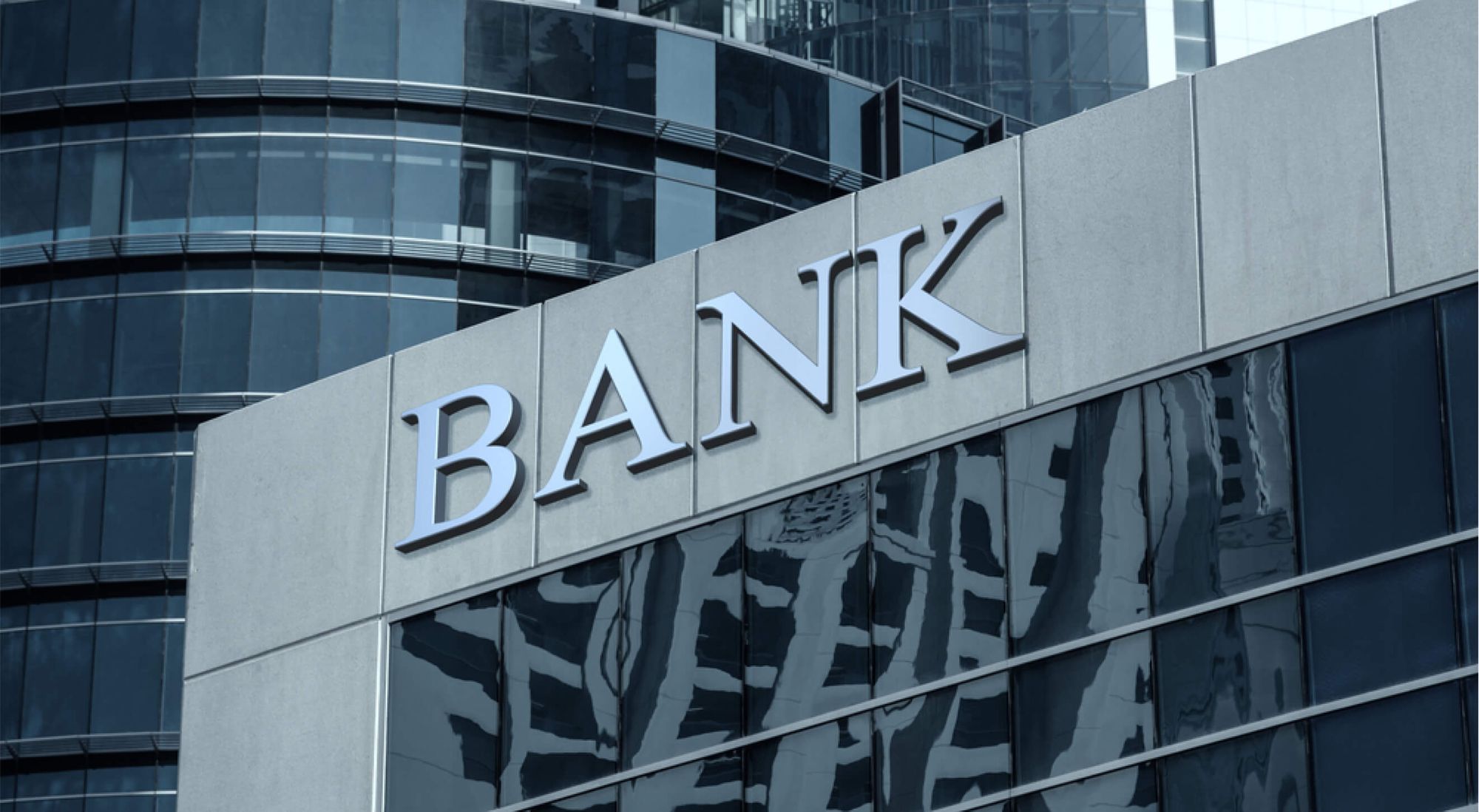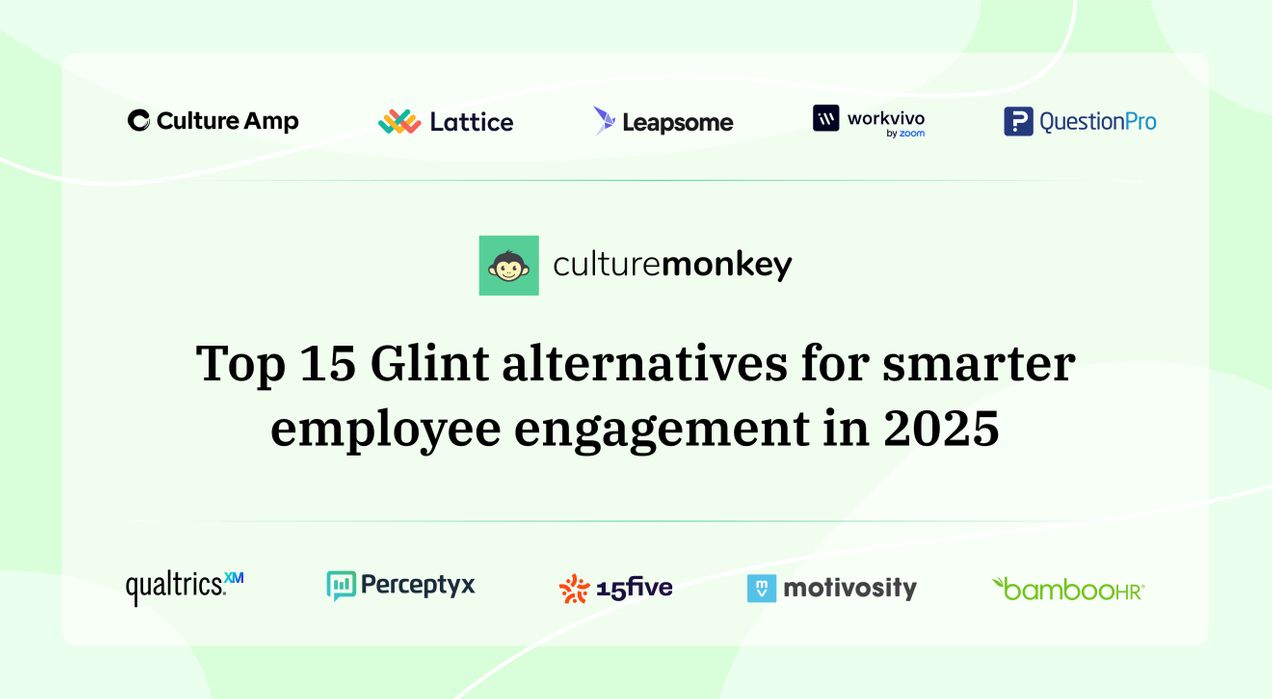25+ Top employee engagement activities in banking sector in 2025

Picture an old grandfather clock in the corner of a bustling bank. Its pendulum swings steadily—tick, tock, tick—regardless of the chaos around it. That’s how many banking workplaces operate: driven by routine, predictability, and structure. But over time, even the most well-crafted gears start to grind if not oiled.
Employees become clock parts, functional, but disengaged. Now imagine winding in fresh energy: a break-time chess match, a surprise team breakfast, or a “thank you” note dropped on a desk. Suddenly, the mechanism hums with purpose.
In high-stakes banking environments, employee engagement activities aren’t just nice-to-haves; they’re the oil that keeps the whole system running smoothly, without wearing people down.
TL;DR
Why is employee engagement critical in the banking sector?

Employees deal with everything from compliance headaches to customer anxieties, often under intense pressure. That’s why employee engagement in banks isn’t a luxury—it’s a business necessity that senior leadership must prioritize.
- Builds trust and accountability: Engaged employees tend to take ownership of their responsibilities. In the banking sector, where trust is currency, this helps reduce errors, drive ethical behavior, and improve internal controls.
- Boosts customer experience: Front-office employees feel valued and motivated to deliver better service. A bank’s reputation can hinge on a single conversation, engagement directly fuels the empathy and responsiveness customers expect.
- Reduces costly attrition: Turnover is expensive and disruptive. When engagement is low, high performers often walk. Effective retention strategies in banking start with making employees feel connected to their work and growth.
- Enhances adaptability in change-heavy environments: From digital transformation to compliance shifts, the banking sector evolves constantly. Engaged employees are more open to change and quicker to upskill or pivot when needed.
- Strengthens collaboration across functions: In siloed banking environments, engagement fosters communication between teams, credit, operations, legal, leading to faster decision-making and fewer bottlenecks.
- Supports compliance culture through morale: Compliance demands can be draining. Engaged teams view them as part of shared goals, not just an extra burden. It’s easier to sustain rigor when morale is high.
Unique workplace challenges faced by banking professionals

The life of a banking professional may look polished from the outside, but behind the scenes, it’s a maze of deadlines, regulations, human complexities, and tough work-life balance. From managing risks to juggling customer expectations, every day is a balancing act. Here are some unique workplace challenges that shape employee engagement in banks, including mental health considerations.
- High-pressure sales and performance targets: Whether it’s loan disbursements or cross-selling products, aggressive targets can burn out even the best performers. Pressure to meet quotas often overshadows long-term relationship-building or personal growth.
- Regulatory fatigue: The banking sector is tightly regulated, and with frequent updates to policies, compliance fatigue is real. Staff often struggle to stay compliant without feeling bogged down, leading to disengagement.
- Limited autonomy: Decisions in banking are often process-bound and approval-heavy. This lack of flexibility affects morale, especially among experienced staff who crave ownership over their work.
- Repetitive and transactional tasks: Whether in customer service or back-office operations, many roles involve highly repetitive tasks. Without banking HR engagement programs, monotony can drain enthusiasm over time.
- Emotional labor with customers: Handling customer stress, especially during financial disputes or loan rejections, takes a toll. Constant emotional labor with little outlet can lead to long-term disengagement.
- Siloed communication structures: Departments often operate in silos—retail, credit, operations, and risk—making cross-functional collaboration clunky. This slows down decision-making and isolates employees from the bigger picture.
- Tech transitions and skill gaps: Digital banking, AI, and fintech disruptions are changing everything fast. Many employees feel underprepared or overwhelmed, especially without structured employee development in finance sector initiatives.
How does engagement boost productivity and reduce attrition in banks?

Banking leaders often chase performance metrics and retention numbers, but skip the very lever that influences both: engagement. A well-engaged employee doesn't just stay longer—they perform better. Here's how employee engagement activities in the banking sector can enhance employee engagement, leading to higher output and improved employee retention.
TL;DR
Employee engagement in banking boosts retention and performance by creating purpose, encouraging ownership, and deepening emotional connection to the role. It supports healthier work habits and makes daily tasks feel meaningful.
Through recognition, wellness programs, and team-building, engagement transforms work from obligation to motivation—driving loyalty, productivity, and long-term success across banking teams.
- Creates a sense of purpose: When employees understand how their work contributes to the bank’s success, they show up with more intention. Engagement aligns daily tasks with bigger goals, reducing apathy and increasing drive.
- Encourages proactive problem-solving: Engaged staff don’t just follow instructions—they identify inefficiencies, fix customer issues faster, and flag risks early. This ownership mindset improves both speed and quality of work.
- Increases emotional investment in the role: A teller who feels seen and supported is far less likely to job-hop. High staff motivation in banking institutions directly reduces the temptation to explore external offers.
- Supports healthier work habits: Engagement initiatives like bank employee wellness ideas lead to reduced burnout, better focus, and lower sick leaves. Healthier employees bring better energy to their workday.
- Makes work feel rewarding, not just required: Whether through regular team-building activities and social events or recognition systems, engaged employees feel appreciated. That emotional payoff strengthens loyalty and creates a positive ripple through teams.
The difference between employee engagement and motivation

Employee engagement and motivation often get used interchangeably—but they’re not the same thing. Motivation is the spark; engagement is the fuel that keeps the engine running. In the banking sector, understanding This distinction helps design a robust employee engagement strategy and better banking HR engagement programs that include professional development and career advancement opportunities beyond surface-level perks.
| Aspect | Motivation | Engagement |
|---|---|---|
| Definition | The internal or external drive to achieve a goal | The emotional commitment and involvement in one’s work |
| Duration | Often short-term or situational | Long-term and sustainable |
| Trigger | Can be sparked by rewards, recognition, or deadlines | Built through purpose, trust, and alignment with values |
| Response to Challenges | May decrease when obstacles arise | Engaged employees persist even through difficult banking scenarios |
| Impact on Behavior | Encourages task completion | Promotes discretionary effort and ownership |
| Dependency on External Factors | Highly influenced by external rewards | More intrinsic and driven by internal satisfaction |
| Relevance to Retention | Might boost short-term performance | Strongly linked to retention strategies in banking |
25 Proven employee engagement activities for banking employees

Let’s face it—banks aren’t typically known for being fun. But a little creativity can go a long way in boosting morale, loyalty, and productivity. These employee engagement activities in the banking sector blend tradition with modern thinking to suit both front-office and back-office banking professionals.
TL;DR
Creative employee engagement activities in banking—like gamified training, wellness perks, peer recognition, and leadership access—boost morale, connection, and performance.
From cross-team shadowing to cultural celebrations, these initiatives blend fun with purpose. They help humanize banking environments, enhance loyalty, and foster a more energized, inclusive, and collaborative culture for both front- and back-office teams.
- Financial wellness workshops: Help employees manage their own money better, reducing stress and improving focus.
- Peer recognition walls: Display shout-outs for small wins on digital or physical boards to encourage appreciation.
- “Coffee with the CEO” sessions: Create informal touchpoints between leadership and staff to foster transparency.
- Pulse check-ins: Use quick anonymous surveys to understand mood and morale in real time.
- Gamified compliance training: Turn regulation refreshers into interactive quizzes to keep teams alert and engaged.
- CSR volunteering days: Allow employees to participate in local volunteering drives for a shared sense of impact.
- Flex Fridays: Offer an early sign-off or remote option to reward productivity during the week.
- Cross-department shadowing: Let employees explore roles outside their team to understand the bigger picture.
- Monthly theme days: Host “Retro Day” or “Green Week” to infuse fun into the routine.
- Birthday & milestone celebrations: Celebrate personal and work anniversaries in a meaningful, not cheesy, way.
- Hackathons for innovation: Invite employees to pitch process improvements and new product ideas.
- Wellness reimbursements: Cover gym memberships or meditation apps as part of bank employee wellness ideas.
- Anonymous suggestion boxes: Encourage unfiltered feedback and reward actionable ideas.
- Weekly huddles: Keep communication crisp and energy high with short team check-ins.
- Mentorship programs: Pair junior staff with experienced mentors to boost employee engagement and development in the finance sector.
- Desk personalization contests: Let teams decorate their spaces and vote on the most creative setup.
- Charity matching programs: Support causes employees care about by matching donations.
- Leadership Q&As: Live Q&A sessions to let employees voice concerns directly to decision-makers.
- Customer impact stories: Share real success stories to help teams connect their work to outcomes.
- Gamified team challenges: Run point-based competitions across branches or departments.
- Lunch & learns: Host bite-sized sessions on topics from fintech to wellness to keep curiosity alive.
- Cultural celebration days: Highlight diversity by celebrating festivals and traditions across teams.
- Workstation wellness kits: Distribute care kits with healthy snacks, ergonomic gear, or aromatherapy.
- Digital shout-outs on intranet: Use internal platforms to publicly recognize effort and wins.
- Regular team building and social events: Monthly get-togethers that go beyond the occasional annual party.
How leadership communication drives engagement in banks

In banking, where precision and trust rule the day, leadership communication isn’t just about memos and meetings—it’s the heartbeat of culture. Employees look to managers and execs for clarity, confidence, and cues.
When done right, prioritizing employee engagement through communication becomes one of the strongest banking HR engagement programs in action, contributing to ensuring customer satisfaction.
- Sets the tone for transparency: When leaders openly discuss business goals, challenges, and wins, employees feel included, not just instructed. This clarity helps build a positive work environment where people are more likely to engage and speak up.
- Reinforces purpose and meaning: Leaders who link day-to-day tasks with larger bank goals help employees see the “why” behind the “what.” That deeper connection boosts both pride and productivity.
- Builds psychological safety: Communication isn’t just about what’s said—it’s about how safe people feel responding. Leaders who listen actively and without judgment create space for honest dialogue and innovation.
- Strengthens manager-employee trust: Inconsistent or top-down-only communication creates distance. Regular, two-way check-ins signal care and reliability—cornerstones for staff motivation in financial institutions.
- Aligns teams during transitions: Mergers, tech changes, and new regulations are stressful. Clear, empathetic communication from leadership helps employees feel supported, not blindsided.
- Drives action from feedback: When leaders acknowledge and act on feedback—via surveys or open forums—it signals respect. That loopback builds credibility and keeps employee engagement in banks thriving.
The role of CSR and volunteering in employee morale

In the banking world, where metrics and compliance often dominate, CSR and volunteering can feel like nice-to-have extras. But in reality, CSR and volunteering are business initiatives and culture changers. Purpose-driven initiatives boost morale, strengthen community bonds, and give employees something meaningful to rally around, beyond interest rates and targets.
1. Builds purpose beyond profit
When employees participate in CSR efforts like financial literacy drives or environmental cleanups, they feel their work contributes to something bigger. That sense of purpose for financial services employees improves job satisfaction and fuels emotional connection to the organization.
2. Encourages cross-team bonding
CSR and volunteering cut across departments and hierarchy. Whether it’s volunteering at a local shelter or organizing a blood drive, these shared experiences, including recognition of employee achievements, break silos and build camaraderie, vital for a positive work environment.
3. Reflects organizational values in action
Talk is cheap. When banks invest time and resources in giving back, employees see leadership walk the talk. This builds pride in the employer brand and reinforces trust in leadership.
4. Offers a healthy emotional outlet
In high-pressure roles, CSR gives employees a chance to step away from spreadsheets and reconnect with human impact. Implementing programs that focus on mental health support can improve employee engagement; it’s one of the most underrated bank employee wellness ideas.
5. Boosts internal recognition and visibility
Highlighting volunteer efforts internally—through newsletters or town halls—spotlights employee initiative in a non-performance context. It nurtures morale while celebrating values-driven behavior.
Using gamification to energize front-office and back-office teams

Let’s be honest—processing loan applications or handling regulatory checklists isn’t exactly thrilling. But throw in a leaderboard, some points, and a little friendly competition?
Suddenly, routine work becomes a challenge worth winning. Gamification brings energy and focus to even the most monotonous banking tasks—for both the client-facing crew and the behind-the-scenes pros.
TL;DR
Gamification transforms routine banking tasks into engaging challenges, boosting motivation and performance across teams. By adding leaderboards, badges, and real-time progress tracking, banks energize both front- and back-office roles.
It promotes healthy competition, interactive learning, and cross-team collaboration—making everyday work more rewarding while supporting employee engagement in financial institutions.
- Makes repetitive work more engaging: Whether it’s KYC verification or call logging, gamifying these tasks with progress bars or completion badges keeps motivation levels high, especially for back-office roles that are often overlooked.
- Sparks healthy competition among branches: Leaderboards showing top-performing branches on sales, service scores, or customer resolutions can drive performance. These incentives boost staff motivation in financial institutions without relying on just financial rewards.
- Encourages learning through play: Turn compliance or product training into quiz battles, flashcard games, or scenario simulations. It’s a creative way to increase participation and reduce groans around mandatory learning.
- Reinforces collaboration through team challenges: Create inter-departmental contests—like a cross-functional problem-solving game or a service excellence week—so employees engage across silos. This strengthens teamwork while energizing the workday.
- Tracks progress in real time: Gamified dashboards let employees see how they’re doing daily. It brings instant feedback to routine work and keeps employees engaged through visibility and goal tracking, supporting broader employee engagement in banks.
Employee development initiatives that retain top talent

Top performers in the banking sector won’t stick around just for a paycheck or a promotion—they crave growth, challenge, and purpose. Strategic development programs show employees they're being invested in, making it far easier to retain them in a competitive talent market. Here are key initiatives banks can roll out to nurture and keep their best.
- Role-specific learning paths: Design tailored development tracks for credit analysts, relationship managers, operations staff, and more. Structured learning keeps the content relevant and makes career growth feel like a guided journey, not a guessing game.
- Internal mobility programs: Create systems that encourage horizontal moves, not just upward ones. Letting a loan officer explore compliance or a teller move into risk shows commitment to long-term employee development in the finance sector.
- Leadership readiness programs: Identify high-potential talent early and enroll them in shadowing, coaching, and stretch assignments. These programs help build a leadership pipeline while boosting engagement through responsibility and exposure.
- Certification and upskilling support: Pay for industry certifications or online courses in fintech, AI, or AML. Not only does it future-proof your workforce, but it also shows real investment in their skills.
- Reverse mentoring initiatives: Pair senior staff with junior digital natives to exchange skills—tech for wisdom. It promotes inclusion, knowledge sharing, and stronger intergenerational trust within the team.
- Cross-functional project sprints: Assign talent to short-term task forces outside their domain—say, redesigning the customer onboarding journey. It offers variety, visibility, and a sense of impact beyond daily routines, boosting retention strategies in banking.
Common engagement pitfalls in financial institutions

Even the most well-meaning banks can get employee engagement in banks wrong, especially when engagement becomes a checklist instead of a mindset. Between rigid processes and compliance pressures, it’s easy to fall into traps that frustrate rather than motivate. Here are the usual suspects to watch out for.
- One-size-fits-all programs: What works for a relationship manager may fall flat for a compliance analyst. Using generic banking HR engagement programs ignores the diversity of roles and needs across departments, leading to disengagement.
- Ignoring feedback loops: Collecting employee feedback but never acting on it? That’s a fast track to cynicism. Employees notice when their input disappears into a black hole—and they’ll stop speaking up.
- Engagement without manager buy-in: Even the best initiatives fail if frontline managers aren’t aligned. If leaders aren’t modeling behaviors or supporting programs, employees won’t take them seriously either.
- Over-emphasis on metrics: Focusing only on productivity or KPIs can dehumanize the work environment. Without investing in a positive work environment, employees feel like cogs in a system, not contributors to a mission.
- Celebrating performance but ignoring well-being: Rewarding top performers while neglecting those struggling leads to burnout and division. Engagement must include bank employee wellness ideas, not just applause for high achievers.
- Infrequent or insincere communication: Surface-level check-ins or overly formal updates don’t build a connection. If communication feels robotic, it drives disconnection, especially in already siloed banking structures.
- Forgetting fun: Banks are serious business, but that doesn’t mean culture should be dull. Skipping regular team building and social events robs teams of human connection—and that’s often what employees crave most.
The impact of regulatory culture on employee sentiment

The banking sector lives and breathes compliance. From anti-money laundering checks to KYC protocols, employees operate under a magnifying glass—every click, signature, and step accounted for. While necessary, this hyper-regulated environment often chips away at autonomy and morale. Many banking professionals feel like they’re constantly under pressure to “get it right,” leaving little room for creativity or even minor errors.
Over time, this breeds a fear-based mindset, where employees focus more on not messing up than on innovating or improving processes. It becomes harder to foster employee engagement in banks when the tone is strictly procedural.
Strict regulatory expectations can also fuel fatigue, especially when changes are frequent or poorly communicated. Employees may feel overwhelmed by documentation, audits, and layers of approval. This is where banking HR engagement programs, including flexible work arrangements, need to step in—not to loosen compliance, but to humanize the experience behind it.
Engagement strategies that acknowledge this reality—like transparent leadership communication, simplified training, and stress-management support—can soften the impact, especially when complemented by engagement surveys. When banks pair structure with empathy, they build a more positive work environment, even within the tight boundaries of regulation. Employees don’t want fewer rules—they want to feel supported while navigating them. And that makes all the difference to long-term sentiment and retention.
Digital tools for driving employee engagement in banking

In an industry that thrives on precision and speed, outdated HR methods just don’t cut it anymore. To keep employees connected, heard, and motivated, banks need engagement tools that are as smart as their core banking systems. Here are five digital platforms transforming employee engagement activities in the banking sector.
TL;DR
To modernize employee engagement, banks are adopting digital tools like CultureMonkey, Microsoft Viva, Leapsome, Officevibe, and Empuls.
These platforms offer real-time feedback, sentiment analysis, recognition, and goal tracking—empowering HR teams to boost morale, productivity, and retention. They bring precision, personalization, and human connection to engagement efforts across diverse banking teams and locations.
1. CultureMonkey
CultureMonkey empowers banks to strengthen employee engagement by transforming anonymous feedback into actionable insights. In a high-pressure, compliance-driven industry like banking, it's crucial to maintain a pulse on employee sentiment across all levels.
Here are 10 key features that make CultureMonkey a perfect fit for the banking sector:
- Anonymous Pulse Surveys: Capture honest, candid feedback from employees without compromising their identity.
- Real-Time Sentiment Analysis: Monitor employee morale instantly to detect early signs of disengagement.
- Lifecycle Feedback: Gather insights throughout the employee journey—from onboarding to exit.
- Custom Survey Templates: Tailor questions to banking-specific roles, regulatory needs, and compliance guidelines.
- Multi-location Reporting: Compare feedback across branches, teams, or geographies from a centralized dashboard.
- Automated Reports & Insights: Deliver digestible, data-backed reports that help leaders take informed actions.
- Engagement Driver Heatmaps: Identify key engagement levers—be it leadership, recognition, or workload—visually and effectively.
- Action Planning Tools: Assign, track, and follow up on improvements collaboratively with line managers.
- Multilingual Surveys: Reach a diverse workforce by launching surveys in multiple languages.
- Enterprise-Grade Security & Compliance: Ensure employee data is handled securely, meeting industry standards and privacy regulations.
2. Microsoft Viva
Integrated with Microsoft Teams, Viva delivers personalized insights and wellbeing nudges right where work happens. From productivity reminders to engagement check-ins, it supports both frontline and back-office staff in staying balanced and informed.
3. Leapsome
Leapsome is ideal for setting goals, gathering feedback, and running 360° reviews. It supports transparent performance discussions and creates a loop between development and motivation, vital for employee development in finance sector.
4. Officevibe
This tool provides real-time pulse surveys and anonymous feedback, allowing banks to spot engagement dips early. It’s especially useful for identifying team-specific challenges across large, multi-branch networks.
5. Empuls by Xoxoday
Empuls makes regular team building and social events digital. It enables recognition, rewards, and peer-to-peer shoutouts, adding a much-needed human touch to remote and hybrid banking environments.
Conclusion
Engaging banking employees in 2025 isn’t about ping-pong tables or pizza days—it’s about purpose, recognition, development, and real-time feedback. The banking sector demands precision, but that shouldn’t come at the cost of people feeling unheard or undervalued.
From bank employee wellness ideas to employee development in the finance sector, thoughtful engagement strategies drive both retention and performance. Whether it’s bridging front-office and back-office silos or making compliance feel less like a burden, the right programs make a real difference.
And if you’re ready to take your employee engagement in banks to the next level, CultureMonkey helps you turn feedback into action with anonymous pulse surveys, sentiment dashboards, and lifecycle feedback—built to meet the unique needs of banking teams.
Summary
FAQs
1. What are the best employee engagement activities for banking professionals?
The most effective activities blend development, recognition, and wellness, like mentorship programs, gamified compliance training, peer appreciation boards, and volunteering days. These initiatives work best when aligned with employee needs and business goals. Regular team-building events and feedback loops also help create a positive work culture across both front-office and back-office banking teams.
2. How can banks improve employee morale and motivation?
Banks can improve morale by fostering transparent communication, supporting wellness, and providing growth opportunities. Recognition programs, internal mobility, and consistent feedback channels boost engagement. Personalized initiatives like wellness reimbursements or cultural celebration days make employees feel seen and valued, reinforcing a positive work environment that enhances overall job satisfaction and motivates teams to perform and stay loyal longer.
3. What engagement strategies work well in regulated industries like banking?
In regulated industries, engagement strategies must balance structure with empathy. Anonymous feedback tools, targeted pulse surveys, transparent communication, and compliance-friendly development programs work well in banking organizations that value both compliance and employee experience. Banks benefit from using tech platforms like CultureMonkey to act on sentiment data while maintaining policy standards, building trust and alignment within regulatory boundaries without sacrificing morale or employee experience.
4. How does employee engagement impact customer satisfaction in banks?
Engaged employees are more attentive, responsive, and solution-driven, directly improving customer interactions. A teller or advisor who feels supported enhances the overall employee experience and delivers better service. When internal morale is high, it translates into patience, clarity, and consistency in client-facing roles, resulting in higher satisfaction, loyalty, and stronger customer relationships that impact retention and brand reputation.
5. Are anonymous surveys effective in the finance sector?
Yes, anonymous surveys are highly effective in finance. They encourage honest feedback, especially in compliance-heavy or hierarchical environments where employees may hesitate to speak up. Tools like CultureMonkey help banks uncover issues early, measure sentiment, and act swiftly, leading to better engagement, reduced turnover, and improved transparency across teams and leadership, critical for organization's success.



